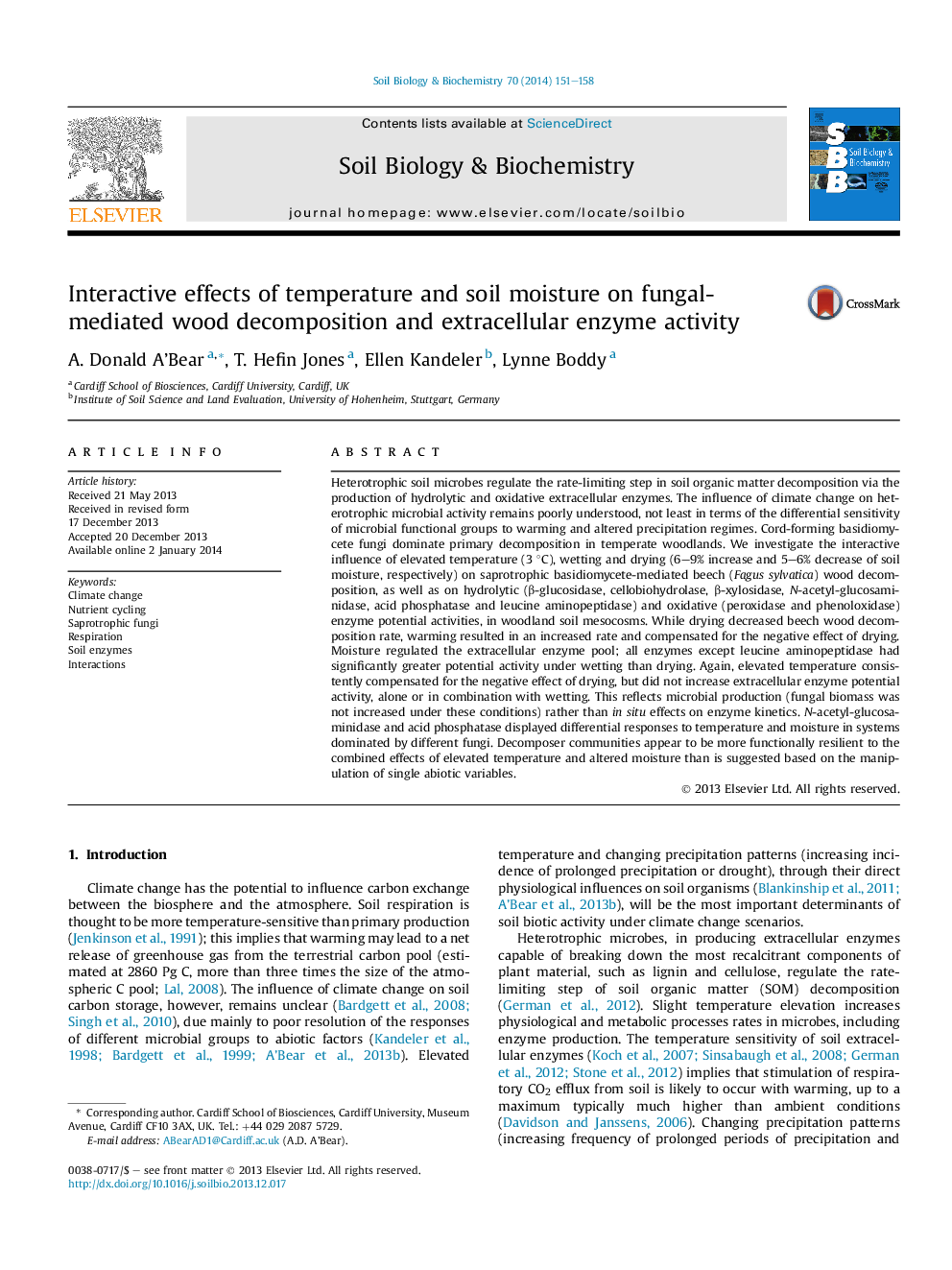| Article ID | Journal | Published Year | Pages | File Type |
|---|---|---|---|---|
| 8364942 | Soil Biology and Biochemistry | 2014 | 8 Pages |
Abstract
Heterotrophic soil microbes regulate the rate-limiting step in soil organic matter decomposition via the production of hydrolytic and oxidative extracellular enzymes. The influence of climate change on heterotrophic microbial activity remains poorly understood, not least in terms of the differential sensitivity of microbial functional groups to warming and altered precipitation regimes. Cord-forming basidiomycete fungi dominate primary decomposition in temperate woodlands. We investigate the interactive influence of elevated temperature (3 °C), wetting and drying (6-9% increase and 5-6% decrease of soil moisture, respectively) on saprotrophic basidiomycete-mediated beech (Fagus sylvatica) wood decomposition, as well as on hydrolytic (β-glucosidase, cellobiohydrolase, β-xylosidase, N-acetyl-glucosaminidase, acid phosphatase and leucine aminopeptidase) and oxidative (peroxidase and phenoloxidase) enzyme potential activities, in woodland soil mesocosms. While drying decreased beech wood decomposition rate, warming resulted in an increased rate and compensated for the negative effect of drying. Moisture regulated the extracellular enzyme pool; all enzymes except leucine aminopeptidase had significantly greater potential activity under wetting than drying. Again, elevated temperature consistently compensated for the negative effect of drying, but did not increase extracellular enzyme potential activity, alone or in combination with wetting. This reflects microbial production (fungal biomass was not increased under these conditions) rather than in situ effects on enzyme kinetics. N-acetyl-glucosaminidase and acid phosphatase displayed differential responses to temperature and moisture in systems dominated by different fungi. Decomposer communities appear to be more functionally resilient to the combined effects of elevated temperature and altered moisture than is suggested based on the manipulation of single abiotic variables.
Related Topics
Life Sciences
Agricultural and Biological Sciences
Soil Science
Authors
A. Donald A'Bear, T. Hefin Jones, Ellen Kandeler, Lynne Boddy,
